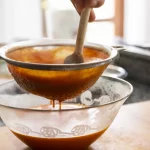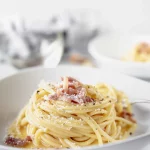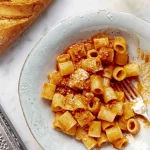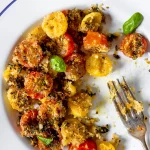I think that pesto sauce with pine nuts is one of the most famous Italian recipes after tomato sauce. Although the ingredients are simple, making it well is not as easy as it seems. My recipe is super easy, and your pesto will be not only delicious, but it will also go with everything.
Basil is an annual herb used in countless recipes. It has spread all around the world from Asia to Central Africa, from Italy to the US. With upwards of 150 varieties of basil, it is composed of 40 different chemical elements, or essential oils, that give off its unique scent and flavor.
The botanical species, the climate, the light exposure, the soil, and the growing methods all contribute to making basil smell and taste different from one plant to another. Sometimes, it may even resemble mint, which does not make a good pesto.
Which basil fits pesto best?
If you prepare pesto quite often, you should buy a small plant and grow it in a vase in your kitchen. It will spread a nice scent around, and you can then cook with it throughout the year.
You can pick basil leaves as needed at any time– in fact, harvesting encourages the plant to produce more leaves.
If you buy it at the supermarket, make sure the leaves are smooth and bright green. When at home, wrap the stems in a wet paper towel to keep them hydrated until you use them. Remove the leaves from the stems.
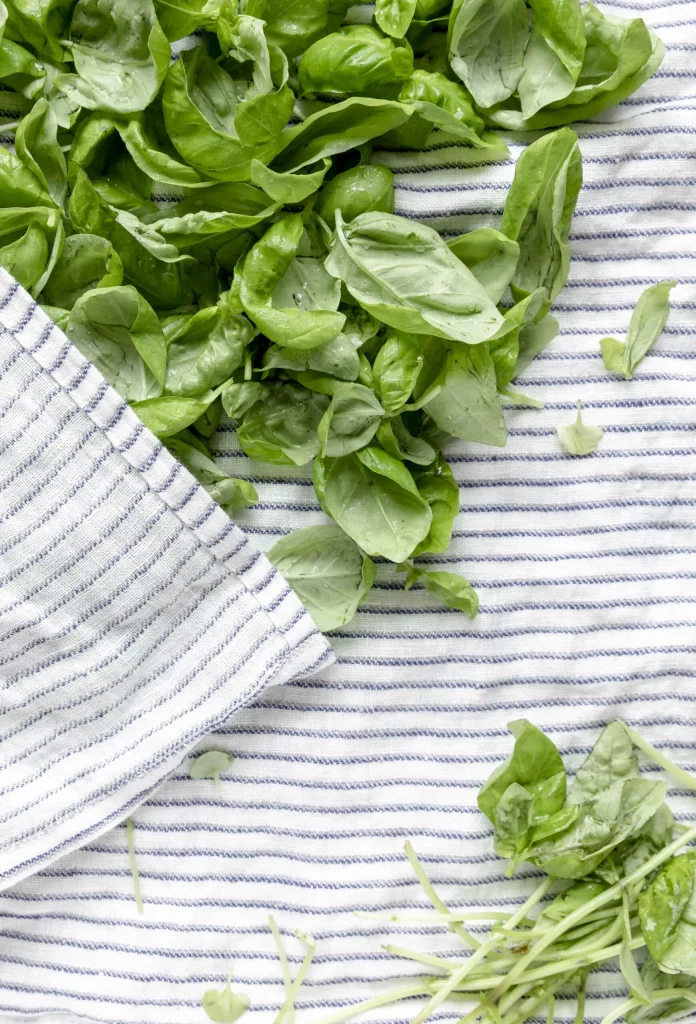
How can you make a fresh pesto?
With a few tricks, making pesto is quite easy. Everyone in Liguria has their own recipe. It is a fresh sauce which doesn’t need cooking—its name comes from the verb pestare, to crush because the basil is crushed in a mortar and pestle. Follow this method for amazing results.
Delicious Homemade Pesto with Pine Nuts
Ingredients
- 3 cups of fresh basil with small, light green leaves; (60-70g)
- 2 medium garlic gloves
- 2 tbsp of pine nuts (about 16g)
- 1/2 cup of grated Parmigiano Reggiano or Grana Padano cheese (40g)
- 6 tbsp of salted grated Pecorino cheese (30g)
- 1/4 cup + 2 tbsp of extra virgin olive oil (1 dl)
- coarse salt
Instructions
- Remove the basil leaves from the stems; gently wash the leaves under cold running water; do not fold them as they turn black easily;
- Spread the leaves onto a tea towel and dry them. They must be perfectly dry to make pesto;
- In a mortar, crush the garlic with some salt;
- Add the basil along with all the ingredients except the oil;
- Lightly toast the pine nuts in a skillet on the stove top for a few minutes until they turn golden brown (stir constantly); this will make a nuttier taste;
- Crush a few leaves of basil, adding only a few leaves at a time with long circular movements of the pestle until there’s a smooth and even paste;
- After crushing the basil, add the crushed garlic and pound the mixture until evenly blended. Add the cheese;
- and then the oil to bind the sauce and create a creamy paste;
- Season with salt.
Why does my homemade pesto taste bitter?
You may have used darkened basil leaves, or you may have used the food processor instead of the mortar and pestle. The blades of the food processor may have overheated the essential oils, hence the unpleasant taste. Both heat and oxygen spoil and blacken the basil leaves. So, be careful; if you want to make pesto in a food processor, the ingredients have to be added as follows:
- Wash and dry the basil leaves perfectly. Remove any darkened leaves;
- Put the lightly-toasted pine nuts into the food processor;
- Add the finely chopped garlic;
- Add a pinch of salt and the basil and pulse a few times;
- Pour cold oil in to help prevent the basil from overheating;
- Pulse the food processor intermittently until a smooth, and even consistency is formed;
- Now add the grated Parmigiano and Pecorino cheese (or only one type of cheese if you do not have both);
- Pulse the ingredients lightly until mixed.
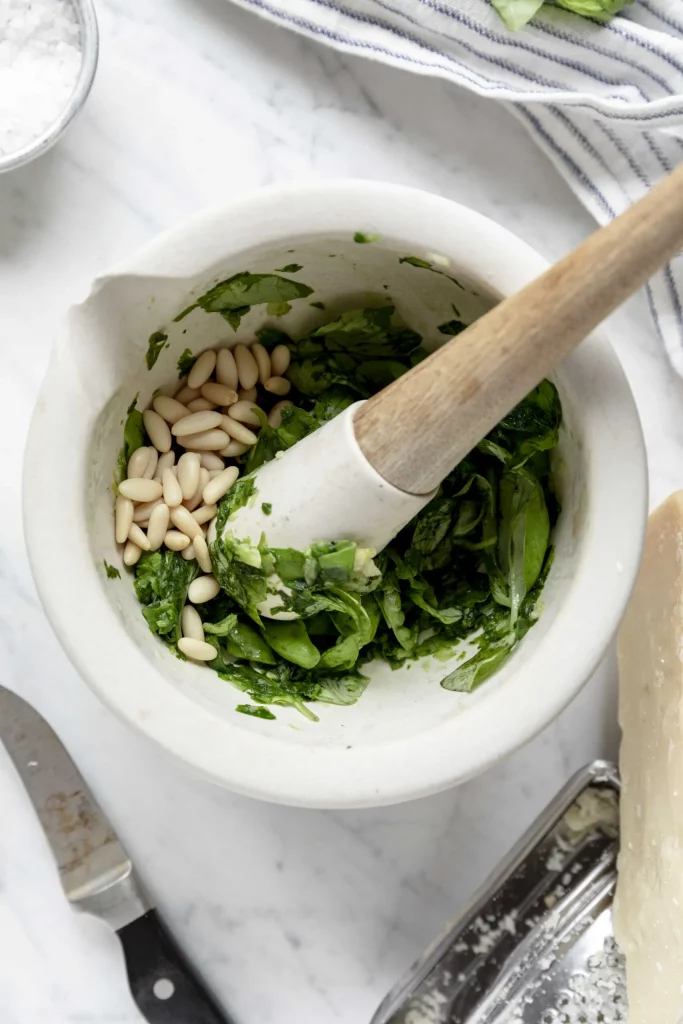
How long can I store my homemade pesto for?
If you don’t use the pesto as soon it is ready, prepare it without the cheese and freeze it in food containers. You then add the cheese when you defrost the pesto. You can freeze the pesto in an ice cube container. When frozen, pop the frozen pesto cubes into a ziplock bag. Then take out only what you need. You can store it in the freezer for 6 months or in the fridge for a few days in an airtight container making sure the oil evenly covers the sauce.
What can I substitute the pine nuts with?
Do not ask people from Liguria to substitute pine nuts with other nuts. They will tell you that it is not authentic pesto even though, theoretically, you may use cashews, almonds, or walnuts. The taste is very different, of course, but they are also delicious.
How can I choose the best store-bought pesto?
If you do not have time to make pesto yourself, or you can’t find good ingredients, you may buy it at the supermarket. Be careful, however; a bright green color does not always mean top quality.
Make sure basil is the first ingredient listed.
What is pesto used for?
In Italy, pesto is used to season both fresh and dry pasta or gnocchi. Officially, it is not paired with anything else. Unofficially, it can be spread on toasted bread topped with oil and chopped tomato to make bruschetta, an appetizer with toasted bread and fresh tomatoes, or it may also season tomato and mozzarella sandwiches. It also goes well with steamed asparagus or hardboiled or fried eggs.
Which pasta goes best with pesto?
If you want your dish to be really like those from Liguria, you should choose trofie or trenette. Trofie is a short, twisted spiral-shaped pasta. Trenette is a narrow, flat, dry pasta similar to linguine or fettuccine.
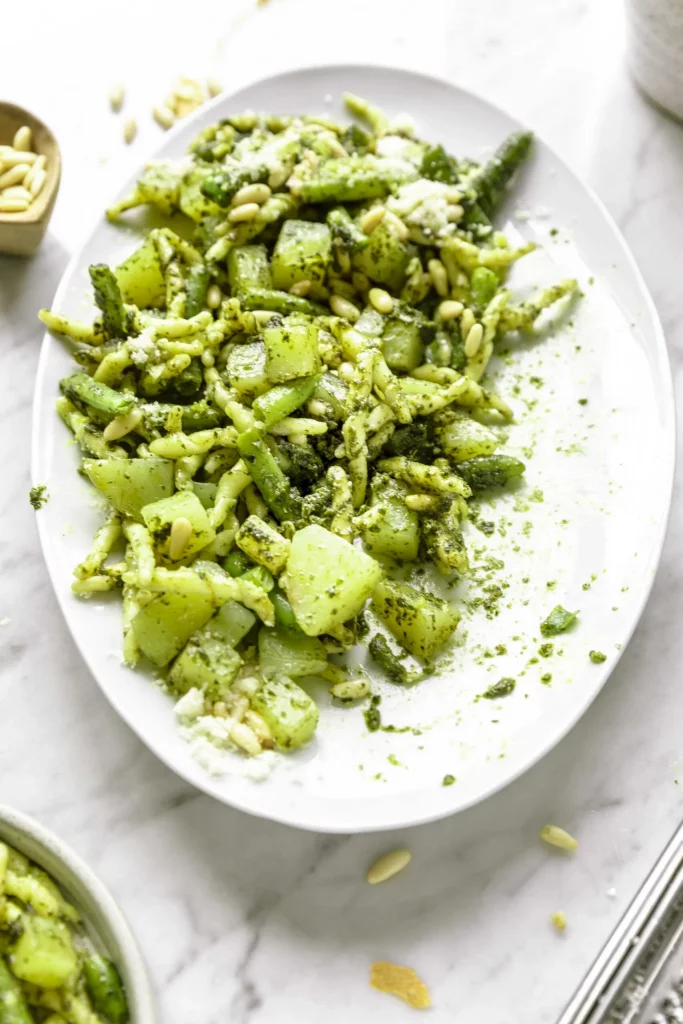
Can I just put pesto on pasta?
An authentic recipe for pasta with pesto calls for two other ingredients: string beans and potatoes.
- Peel, wash, and dice two potatoes (2 medium potatoes for 4 servings);
- Break off the ends of the string beans (½ cup or 60g for 4 servings) and cut them up;
- Cook the vegetables in salted boiling water;
- When the vegetables are tender, cook the pasta (2/3 cup or 80g per person) according to the package instructions;
- Drain and season the pasta and vegetables with the pesto with a scoop of pasta cooking liquid;
- Serve very hot. Enjoy!

